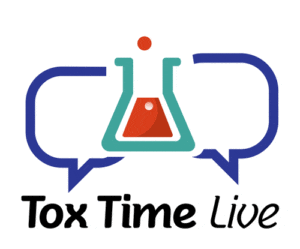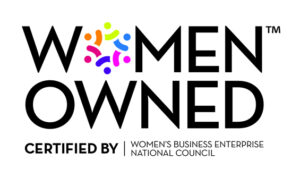Blog

USDTL hosted an online Webinar, titled ToxTime, where we discussed Newborn Alcohol Biomarkers.
The Webinar discussion included:
- What is FASD?
- The prevalence of FAS.
- The current methods available for detecting prenatal alcohol exposure.
- The importance of screening moms for alcohol.
- The importance of providers testing for alcohol, even if they do not have a direct plan of care for babies exposed to alcohol.
Click Here for the On-Demand Link to the Webinar.

Every quarter, USDTL publishes and sends out a newsletter. In it, there are company updates, our latest events, insider news, and much more. To view the Second Quarter newsletter from USDTL, you can access it here.
Click Here to Sign up for future emails to receive our newsletter.
USDTL is a proud member of The Women’s Business Enterprise National Council (WBENC). WBENC is a non-profit organization that is dedicated to helping women-owned business, like USDTL, thrive. As a member of WBENC, we have a mutual belief that diversity promotes innovation, open doors, and creates partnerships that help fuel the economy.
As a certified Women’s Business Enterprise, or WBE, USDTL went through a rigorous and stringent certification process to confirm that the business is owned, managed, and controlled by a woman or women. As a nationally certified WBE, we are able to network with other WBEs and collaborate with women-owned businesses to develop a mutually beneficial relationship.
To learn more about WBENC, visit https://www.wbenc.org/.

USDTL hosted an online Webinar, titled ToxTime, where we discussed Drug Trends and Concerns Regarding Neonatal Abstinence Syndrome (NAS).
The Webinar discussion included:
- A Brief Overview of NAS
- Withdrawal Symptoms
- Drug Withdrawal Variance
- USDTL Observations & Growing NAS Concerns
- Breaking the Stigma at Lily’s Place, a NAS Center
Click Here to View the Webinar
USDTL hosted an online Webinar, titled ToxTime, where we discussed Hair and Nail Testing – What’s the Difference?
The guest speaker was Joseph Jones, Ph.D., NRCC-TC, Chief Operating Officer at USDTL.
The webinar includes discussion around the following points:
- How Fingernail specimens can complement a hair testing program
- Using Fingernail as an alternative specimen type
- The difference in detection windows of Hair and Fingernail Specimens
- Case reports using both Hair and Fingernail specimens
USDTL hosted an online Webinar, titled ToxTime, where we discussed Environmental Exposure Drug Testing 101 (ChildGuard®). The guest speaker was Joesph Jones, Ph.D., NRCC-TC, Chief Operating Officer at USDTL.
The Webinar discussed why ChildGuard® was developed, and the value it brings to clients. Other points of discussion include:
- How drugs are incorporated in hair
- How fingernails can be used
- Legal defensibility of ChildGuard®
- Trends in ChildGuard® testing
The full webinar is available to watch below.
USDTL hosted an online Webinar, titled ToxTime, where we discussed Missed Opportunities in Newborn Drug Testing. The guest speakers were Colleen Cusack, Client Services Specialist at USDTL and Kristen Moore, MSN, RNC-OB, C-EFM, Director of Maternal Services at Union Hospital.
Colleen Cusack is USDTL’s Client Services Specialist. Colleen has 15 years of Client Services experience and has been with USDTL for 8 years. She consistently goes above and beyond to assist and advocate for the client. Colleen has clear communication skills, strives to practice active listening, is empathic, and is very knowledgeable. She plays a key role in improving the client’s experience and makes an impact on USDTL’s vision of Protecting and Enriching Lives.
Kristen Moore is a perinatal nurse experienced in providing optimal care to women with normal and complicated pregnancies. She has worked as a unit-based educator, clinical manager, chief nurse consultant for the Department of Health, and now serves as the Director of Maternal Child Services at Union Hospital in Terre Haute, Indiana. Kristen’s hospital began umbilical cord screening in November of 2020. Her team states they have experienced drastically improved reporting times with cord screening versus meconium, as well as other benefits including ease in collection and guaranteed availability of testing for all patients.
The Webinar discussed why universal collection is important in newborn drug testing, and the value it brings to hospitals. Other points of discussion include:
- Meconium and umbilical cord testing
- How rejections have improved with umbilical cord testing
- Criteria for testing
- Importance of obtaining an accurate history of abuse
- Testimonies and stories
The full webinar is available to watch below.

by: Kelly Hack
Another potent synthetic opioid has recently been identified and is creating significant concern among those in the forensic toxicology and law enforcement realm. According to The Center for Forensic Science Research & Education (CFSRE), Isotonitazene (iso) is a synthetic opioid derived from etonitazene, which is a national and international controlled substance that was first synthesized in the 1950s but denied approval for medical use due to the extreme potency of the substance. Iso shares a similar chemical structural resemblance to etonitazene and has been claimed to be more potent than fentanyl and 100 times more powerful than morphine. The emergence of this drug has public health and safety, law enforcement, laboratory personnel, and medical examiners on high alert. In August 2019, eight blood specimens associated with postmortem death investigations identified iso in their toxicology reports.
According to an article by USA Today, alarming data regarding this novel opioid has been documented with recent overdose deaths in Indiana and Illinois. Blood samples taken from these overdose death victims identified the presence of iso leading to conclusions that iso is unknowingly being cut into substances such as cocaine. In 2018, 713 overdose deaths in Indiana involved synthetic opioids like iso, generating a death rate of 11.5 deaths per 100,000 persons compared with the national rate of 9.9.
Medical Express, recently wrote an article explaining that similar to fentanyl, iso is quite lethal, as a minute amount can trigger a near-instant overdose. Iso, due to its slight chemical structural difference remains legal at the national level. Despite the United States’ efforts on prohibiting any distribution of fentanyl from China, chemists are eagerly replacing their demand by utilizing similar derivatives. Iso can be identified as a yellow or off-white powder and is cut into other substances and pressed into counterfeit pills without the user’s awareness.
An article written by Bridges of Hope Rehab Treatment Center, it notes that similar to fentanyl, many people who are overdosing from iso are not aware their substances are tainted with this fatal additive. It also discusses adding iso to drug supplies, amplifies substance use disorder (SUD) by increasing one’s tolerance and dependence.
- Umbilical Cord Tissue Testing for SSRIs
- A Comparison of Turnaround-Times for Two Popular Specimen Types Used for Newborn Toxicology: Meconium and Umbilical Cord Tissue
- Using Umbilical Cord Tissue to Identify Prenatal Ethanol Exposure and Co-exposure to Other Commonly Misused Substances
- Toxicology as a Diagnostic Tool to Identify the Misuse of Drugs in the Perinatal Period
- Specimen Delay
- Drug Classes and Neurotransmitters: Amphetamine, Cocaine, and Hallucinogens
- Environmental Exposure Testing for Delta-8 THC, Delta-9 THC, Delta-10 THC, and CBD
- Bromazolam and Synthetic Benzodiazepines
- October 2024 (5)
- March 2024 (1)
- February 2024 (1)
- January 2024 (3)
- December 2023 (1)
- November 2023 (1)


